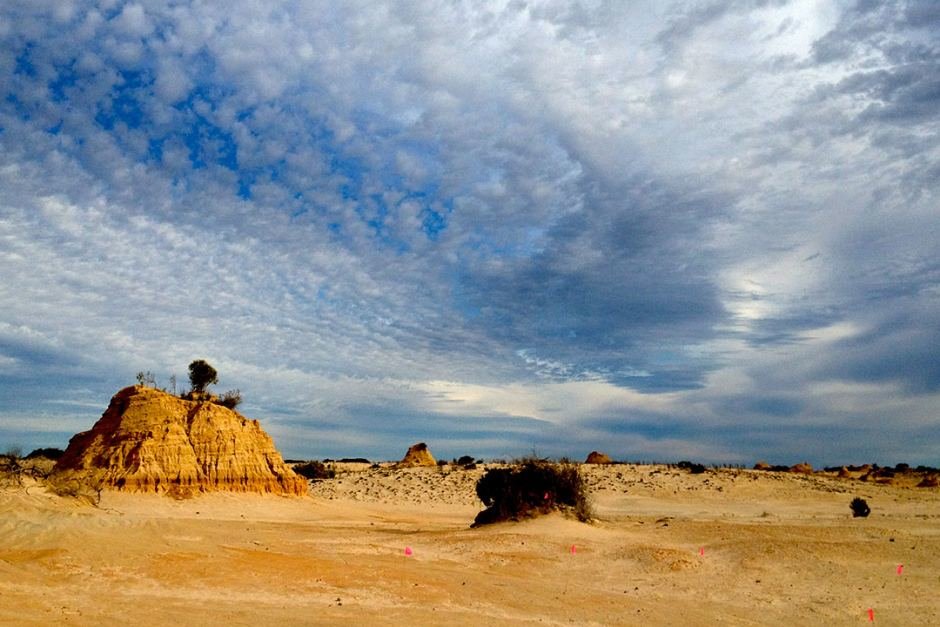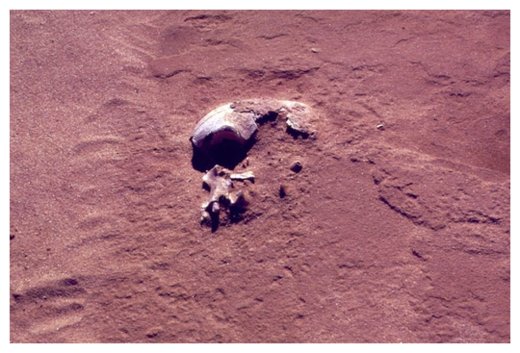Researchers say the findings overturn a 2001 paper that argued the oldest known Australian human remains found near Lake Mungo in New South Wales were from an extinct lineage of modern humans that occupied the continent before Aboriginal Australians.
This claim was based on mitochondrial DNA extracted from Mungo Man's 40,000-year-old fossilised remains by a team lead by Australian National University's Dr Greg Adcock.
But now, Professor David Lambert, from Griffith University, and colleagues, have used new DNA sequencing methods to re-analyse the material from Mungo Man, who was found in the World Heritage-listed Willandra Lakes region, in far western New South Wales.
Professor Lambert said the latest findings, published today in Proceedings of the National Academy of Sciences, confirmed earlier concerns with the 2001 report.
"There was a lot of suspicion at the time amongst a lot of international researchers in ancient DNA that there was a distinct possibility the results were due to contamination," he said.
"The reason for the suspicion was that the sequences for Mungo Man, in particular, were very unusual ... and gave rise to the thought that Aboriginal people were not in fact the first Australians — that there was a group there before them and that Aboriginal people displaced them.
"We could not, with better technology, repeat what the original study found and therefore the evidence that Aboriginal people were not the first Australians has no foundation."
Professor Lambert said it was important to attempt to replicate the 2001 findings to determine their authenticity.

He said the 2001 paper used a technique known as a polymerase chain reaction (PCR) that allows amplification of very short sequences of DNA.
"The big problem with ancient DNA work is that it's very easy to make copies and amplify sequences that don't belong to the sample itself, for example to someone who's been handling the bone," he said.
The latest DNA sequencing technology by comparison amplified all the DNA in the sample.
"The advantage of this technology — we can identify the human sequences in there, the viral sequences, and the bacterial sequences and get a better idea if there really is endogenous DNA left in that bone," Professor Lambert said.
The researchers found no DNA that could be used to identify Mungo Man, which means at this stage scientists must rely on his bones to identify him.
Palaeoanthropologist Professor Colin Groves, from the Australian National University, is one expert who has spent quite a bit of time thinking about where Mungo Man fits in.
Findings don't surprise ancient DNA experts
The original study by Dr Adcock and his co-workers was broadly publicised internationally not only because it suggested there were humans in Australia before Aboriginal people but because it challenged a single African origin for all modern humans.
Ancient DNA expert Professor Alan Cooper, at the University of Adelaide, welcomed the new paper, but said the findings were not "surprising".
"The Adcock sequences have been universally accepted as contamination since 2001, and they haven't been used in subsequent genetic studies of human evolution, as the field rejected them completely," Professor Cooper said.
Aboriginal elder Mary Pappin, of the Muthi Muthi people, one of the traditional custodians of Mungo Man, said they had been happy to support the latest study by giving permission to access to Mungo Man.
"I didn't think Australian Aborigines weren't the first people ... but anything that supports us in any way is good," she said.
Geneticist Professor Simon Easteal, a co-author on the Adcock paper, said he was convinced the new technology used by Professor Lambert and colleagues had found contamination, but this did not rule out the veracity of his team's findings.
"It's not out of the question that there may still be ancient DNA in samples of Mungo Man not studied by the researchers," Professor Easteal said.
As part of the latest study, Professor Lambert said the team also re-analysed more than 20 of the other ancient people from Willandra and had recovered for the first time a complete mitochondrial genome from an ancient Aboriginal person.
The genome belonged to a man buried close to the location where Mungo Man was originally interred, but the age of the man had yet to be determined, Professor Lambert said.




Reader Comments
to our Newsletter